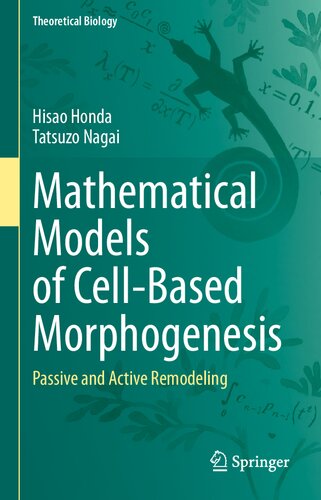

Most ebook files are in PDF format, so you can easily read them using various software such as Foxit Reader or directly on the Google Chrome browser.
Some ebook files are released by publishers in other formats such as .awz, .mobi, .epub, .fb2, etc. You may need to install specific software to read these formats on mobile/PC, such as Calibre.
Please read the tutorial at this link: https://ebookbell.com/faq
We offer FREE conversion to the popular formats you request; however, this may take some time. Therefore, right after payment, please email us, and we will try to provide the service as quickly as possible.
For some exceptional file formats or broken links (if any), please refrain from opening any disputes. Instead, email us first, and we will try to assist within a maximum of 6 hours.
EbookBell Team

4.1
60 reviewsThe book introduces two mathematical cell models, the cell center model and the vertex model, with their applications. The cell center model is applied to elucidate the formation of neat cell arrangements in epidermis, cell patterns consisting of heterogeneous-sized cells, capillary networks, and the branching patterns of blood vessels. The vertex model is applied to elucidate the wound healing mechanisms of the epithelium and ordered pattern formation involving apoptosis. Pattern formation with differential cell adhesion is also described. The vertex model is then extended from a two-dimensional (2D) to a three-dimensional (3D) model. A cell aggregate involving a large cavity is described to explain the development of the mammalian blastocyst or the formation of an epithelial vesicle. Epithelial tissues and the polarity formation process of the epithelium are also explained. The vertex model also recapitulates active remodeling of tissues and describes the twisting of tissue that contributes to understanding the cardiac loop formation of the embryonic tube. The book showcases that mathematical cell models are indispensable tools to understand the shape formation of living organisms. Successful contribution of the mathematical cell models means that the remodeling of collective cells is self-construction. Examining the successive iterations of self-constructions leads to understanding the remarkable and mysterious morphogenesis that occurs during the development of living organisms.
The intended readers of this book are not only theoretical or mathematical biologists, but also experimental and general biologists, including undergraduate and postgraduate students who are interested in the relationship between genes and morphogenesis.